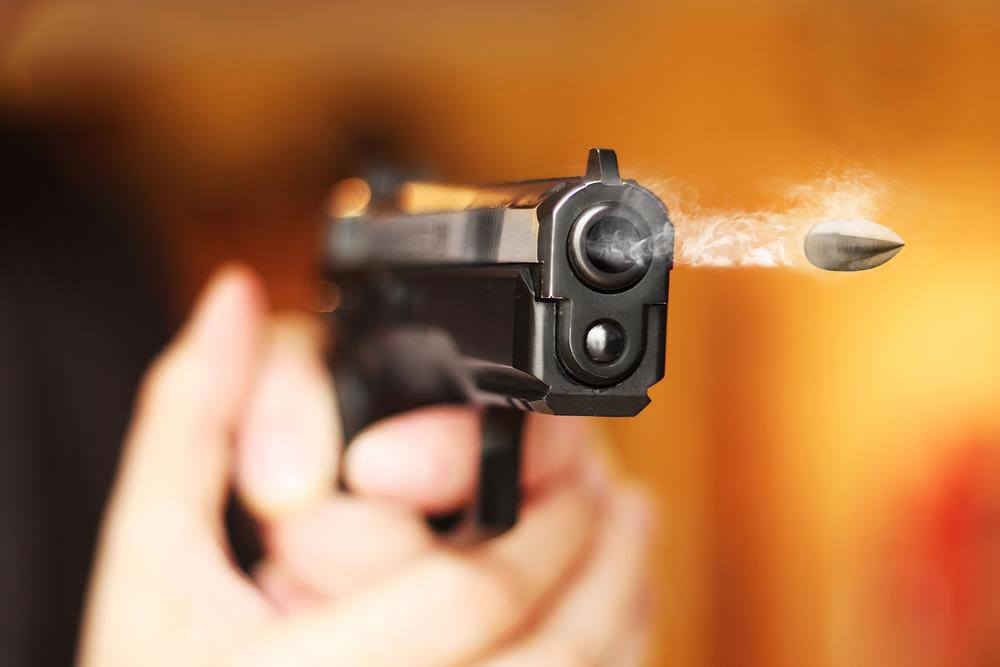Let’s assume you learned (or are learning) to shoot a pistol for purposes of self defense (that is the usual reason). The problem for most people is that they are unlikely to ever have to prove themselves; statistically, the odds are against them (you) being a victim of a violent crime. Therefore, they only try to gain a basic skill level. After all, how much time would you devote to learn parachuting, if you never flew in a plane? Unfortunately, due to fear, adrenaline, blood pressure, and other factors, most people in a crisis will lose half their gun-handling skills, and end up being a victim anyway.
The secret is to over-train, to the point that many of those skills become second nature. Many casual gun owners only go to a range 2-6 times a year, and shoot 50-100 rounds each time. Competitive shooters, on the other hand, shoot thousands of rounds per week. How can we achieve a reasonable skill level without spending $1000/month?
Make no mistake about it, there is an investment of time required. Most gun ranges sell memberships that, like gyms, assume you will not use it enough, so they can oversell their facilities. If you buy a membership that allows you to shoot free, then go to the range twice a month, you will probably come out ahead. If you’re not shooting at least twice a month for the first year, you’re not really serious. Do you work out twice a month and expect to lose weight?
Now that you have a routine, let’s look at four areas that require your attention:
INSTRUCTION. Being self-taught is not the short-cut, but having a guide is. There are many options. You can take private lessons from an instructor, you can buy very good DVD programs on various aspects of shooting and self-defense, and you can also find many free tutorials and videos online. Sometimes you get what you pay for, but all of those resources can be helpful, except the ones that don’t apply to your situation. You probably don’t need to know what trick shooters or snipers teach. In most cases, if you pay for any type of instruction, you will probably get your moneys worth.
FUNDAMENTALS. Safety rules, Stance, Grip, Aiming, Breathing, Working the trigger, Follow-through. Those never change. Research each one, and read everything you can find about them. Allow for slight differences from people with different types of backgrounds. You will begin to see a pattern, learn some tricks that help, and some that don’t. Practice the fundamentals as if your life depended on them. Read that again.
EQUIPMENT. When I started collecting Cold War period weapons, I read some advice: “You will make mistakes. Accept it and move on.” The same is true here. The gun you own is likely not the one best suited to you, your hand, or your plans. Borrow or rent other guns to try out. When you find one you like better, buy it, and sell the old one (or not). If your goal is concealed carry, you will likely find out that you can develop your skills better and faster with either a duty-size gun or a 1911 style. Then transfer those skills to the smaller gun. Longer barrels are better than shorter ones; heavier guns are frequently better than lighter ones. If the sights are not optimal for you (age is a factor), replace them with fiber optic or other styles.
PRACTICE. Optimize your practice sessions by having a goal each time. It could be slow, pinpoint accuracy at 3 yards, hitting an 8-inch target at 15 yards, timed fire at a silhouette at 10 yards, one-handed shooting, timed rapid fire with a reload, etc. There are thousands of excellent drills available online. Pick some that are within your skill set, and some that are just beyond your skill set. A stopwatch or timer will put pressure on you that will show up weaknesses.

